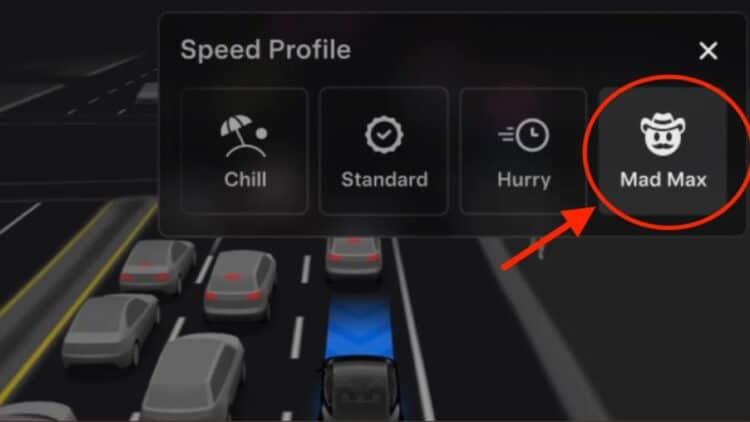When Tesla releases Mad Max mode for its Full Self-Driving (FSD) system, excitment builds among drivers. While Mad Max mode ignores speed limits, it may pose a serious concern in terms of road safety and may fall short in terms of meeting regulatory requirements. Drivers need to know something first before they start unleashing Mad Max mode and ignoring all speed requirements.
Understanding the controversy behind Mad Max mode
In 2018 during Tesla’s days of autopilot testing, Mad Max mode was unveiled. The reason Mad Max mode is on everyone’s lips now is because the mode is back in the FSD version 14.1.1.2. When Mad Max mode is unleashed, the car can drive considerably faster, higher than the posted limit and rather aggressive and quicker lane changes can be initiated. The lane changes are much more forceful and continous than the previous “Hurry” mode. According to Tesla, the Mad Max mode is ideal for maneuvering your way around highly dense traffic areas.
While pushing speed boundaries is one thing, the controversy behind the Mad Max mode is that it pushes speed limits to the core exceeding 15 mph and ignoring stop signs. Early footage of Teslas driving in Mad Max mode shows rather reckless driving.
After the forced recall of the FSD Beta in 2022, the Mad Max mode seems to be pushing the boundaries too far. The reintroduction of such a driving mode that does not take heed of stop signs could be a cause of concern and could result in many road fatalities.
Mad Max mode destined to face some regulatory heat
At present, Tesla faces four separate federal investigations. The automaker is thus not a stranger to regulatory pressure and dealing with regulatory heat. Tesla also battles with a pending legal challenge posed by the California Department of Motor Vehicles concerning the naming of its autopilot and Full Self Driving (FSD) system that was not seen as being fully autonomous.
Amidst all the federal investigations and legal challenges, the decision by Tesla to reactivate the Mad Max mode seems rather unwise. Supporters of Tesla are even taken aback by Tesla’s decision to reactivate this mode that makes the brand seem like a rule breaking brand. The reactivation of Mad Max mode could classify Tesla as an automaker associated with danger.
Why has Tesla chosen to reintroduce the Mad Max mode?
Tesla’s reintroduction of the Mad Max mode is somewhat of a technological update as well as a show put on by the brand. Tesla understands that there are a few drivers who seek speed, particularly in areas like Southern California. The company has; however, faced much criticism over the safety of the vehicle, especially those driven in autonomous mode. Tesla seems to be facing criticism in terms of the safety of the vehicle under Mad Max mode.
Tesla’s public image is at stake, but the main concern with reactivating Mad Max mode is that public safety is of serious concern, especially on the road. While Max Mode truly is exciting, the main concern is that drivers on the road may not be safe if this mode is activated. Perhaps there is a reason why Tesla will be more expensive in one state.
What Tesla drivers need to know first?
Tesla drivers need to remember that the FSD remains a Level 2 driver-assistant system as per current regulations. Drivers also need to note that FSD cannot make the car fully autonomous. Tesla has issued a warning to drivers to remain on alert, and to be ready to take over when the need arises. While Tesla drivers may be convinced that the Mad Max mode functions smoothly, drivers need to be ready to step in and assume personal liability when activating this mode. Higher insurance premiums certainly do face drivers ready for Mad Max mode. Just like the secret of Tesla Model S was unveiled, the secret of this Mad Max mode has been unveiled too.
Disclaimer: Our coverage of events affecting companies is purely informative and descriptive. Under no circumstances does it seek to promote an opinion or create a trend, nor can it be taken as investment advice or a recommendation of any kind.


